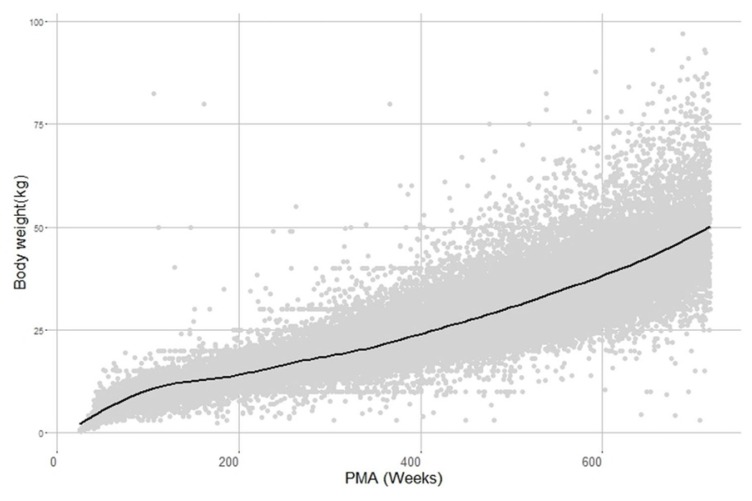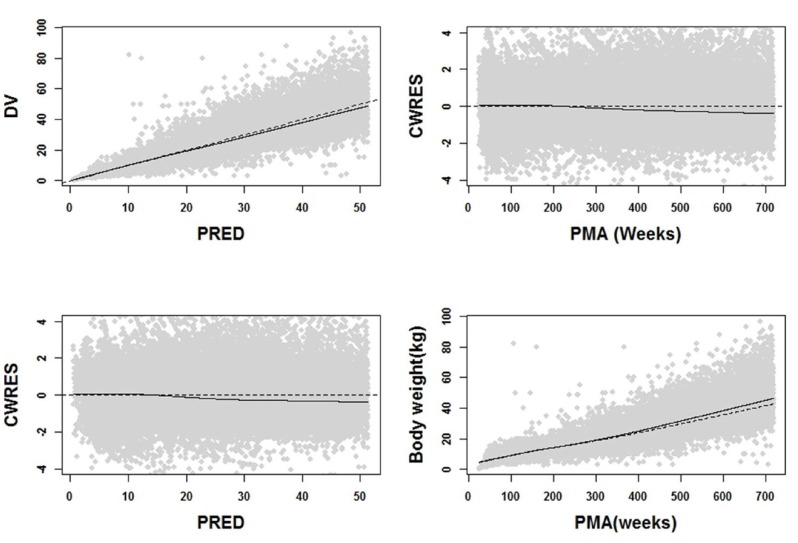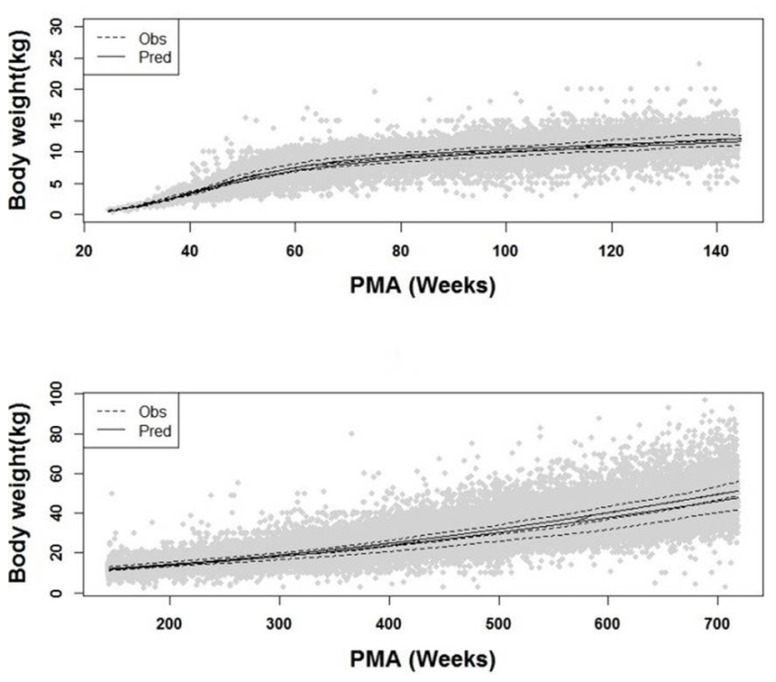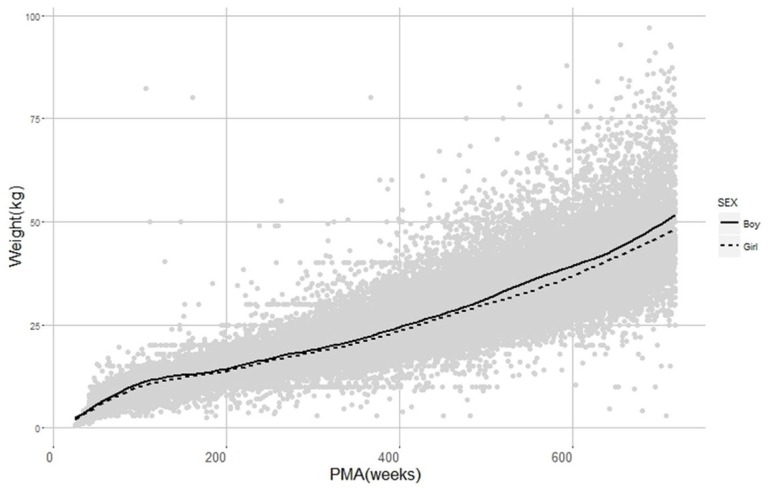Transl Clin Pharmacol.
2017 Jun;25(2):101-105. 10.12793/tcp.2017.25.2.101.
Relationship between body weight and postmenstrual age in a Korean pediatric population
- Affiliations
-
- 1Department of Pharmacology, Yonsei University College of Medicine, 50-1 Yonsei-ro, Seodaemun-gu, Seoul 03722, South Korea. kspark@yuhs.ac
- KMID: 2386767
- DOI: http://doi.org/10.12793/tcp.2017.25.2.101
Abstract
- Weight is a covariate representative of body size and is known to influence drug disposition. Recently, with increased use of allometric scaling, this variable has become more significant in accounting for variability in pharmacokinetic parameters. In adults, weight can be considered as a time invariant covariate because physical development is complete. As a result, when weight is missing in data, the typical or median value (say, 70 kg) could be imputed. On the contrary, weight continuously changes with age in the pediatric population. In this case, it is more appropriate to consider different median weight for each age group. We constructed a prediction model for weight using postmenstrual age (PMA) with the data consisting of 83,014 Korean pediatric patients. Weight, PMA, and gender information were collected from electronic medical records. Sigmoid models multiplied by exponential or logistic function were tested for basic model structure. Covariate effects on model parameters were then investigated using selection criteria of p < 0.001. All analyses were performed using NONMEM 7.3.0 and R3.2.0. The sigmoid model multiplied by logistic function best described the data and there was a significant difference between boys and girls in model parameters. It is expected that the results obtained in this work can be used for imputation of missing weights in pediatrics when PMA is available. In addition, the developed model can be used for clinical studies in children under 12 years old whose weight change rapidly with age and for model building in dealing with time varying body weight as a covariate.
MeSH Terms
Figure
Reference
-
1. Rowland M, Tozer TN. Clinical pharmacokinetics/pharmacodynamics. Lippincott Williams and Wilkins Philadelphia;2005.2. Shingleton A. Allometry: the study of biological scaling. Nat Educ Knowl. 2010; 3:2.3. Wang C, Allegaert K, Peeters MY, Tibboel D, Danhof M, Knibbe CA. The allometric exponent for scaling clearance varies with age: a study on seven propofol datasets ranging from preterm neonates to adults. Br J Clin Pharmacol. 2014; 77:149–159. DOI: 10.1111/bcp.12180. PMID: 23772816.
Article4. Holford N, Heo YA, Anderson B. A pharmacokinetic standard for babies and adults. J Pharm Sci. 2013; 102:2941–2952. DOI: 10.1002/jps.23574. PMID: 23650116.
Article5. Lu H, Rosenbaum S. Developmental pharmacokinetics in pediatric populations. J Pediatr Pharmacol Ther. 2014; 19:262–276. DOI: 10.5863/1551-6776-19.4.262. PMID: 25762871.
Article6. Rhodin MM, Anderson BJ, Peters AM, Coulthard MG, Wilkins B, Cole M, et al. Human renal function maturation: a quantitative description using weight and postmenstrual age. Pediatr Nephrol. 2009; 24:67–76. DOI: 10.1007/s00467-008-0997-5. PMID: 18846389.
Article7. Sumpter AL, Holford NH. Predicting weight using postmenstrual age–neonates to adults. Paediatr Anaesth. 2011; 21:309–315. DOI: 10.1111/j.1460-9592.2011.03534.x. PMID: 21320235.
- Full Text Links
- Actions
-
Cited
- CITED
-
- Close
- Share
- Similar articles
-
- Incidence and Time of Onset of Retinopathy in Premature Infants in Korea
- Methods of weight estimation in pediatric resuscitation
- Relationship between normal heart size and body indices in Korean
- Body Mass Index and Weight Loss in Overweight and Obese Korean Women: The Mediating Role of Body Weight Perception
- Serial investigation on the interrelationship between body height, weight and selected craniofacial dimensions during mixed dentition period





